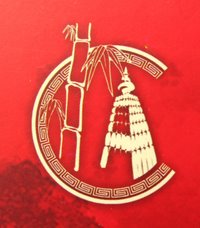In India, ethnic Chinese still waiting for apology
Thousands were rounded up as suspected spies and sent to an internment camp after India lost a 1962 border war with China. India never filed any charges.
Chinese Premier Li Keqiang with Indian Prime Minister Manmohan Singh in New Delhi in May (Saurabh Das, Associated Press / May 20, 2013)
By Mark Magnier
June 28, 2013, 1:01 a.m.
KOLKATA, India — India-born Monica Liu was 9 in 1962 when her family was loaded into box cars for an eight-day rail trip to an internment camp in the western Indian desert.
The Lius were among about 3,000 people of Chinese descent, most of them Indian citizens, rounded up without trial as suspected spies or sympathizers and placed in Rajasthan state's Deoli camp after India's one-month border war with China. Her family remained in detention until 1967.
Over the decades, the Chinese-Indian community has paid a high price for India's humiliating defeat and the subsequent distrust between the two Asian giants. In May, recently named Chinese Premier Li Keqiang visited India in a bid to improve relations. But few expect close ties anytime soon, in light of a disputed 2,100-mile border and India's hosting of the Dalai Lama, Tibet's exiled spiritual leader.
Long consumed by fear, anger and denial, many former detainees have only recently begun speaking out, urging New Delhi to admit mistakes, as Washington finally did in 1988 for the detention of Japanese Americans during World War II.
"I've felt that the Indian government should apologize openly," said Harry Shaw, secretary of a Toronto-based association of former Deoli internees. "Unfortunately the whole thing's been swept under the rug."
Liu, the eldest of five siblings from the northeastern Indian city of Shillong, recalls the shock of arriving at the sparse 40-foot barracks surrounded by barbed wire.
The heat was oppressive and beds were often bug-infested, she said. There were no schools and only rudimentary medical care in the camp, built in 1852 by the British. Boredom was endemic and internees were treated as if they were criminals.
"Escape was impossible," Shaw said. "Rajasthan is desert and, being Chinese-looking, you'd be immediately spotted. It's not like we fit in."
Those who accepted deportation — India's preferred solution — were released first, with hundreds immigrating to China in 1963. Those who refused, including families fearful of the Chinese Communist Party, Tibetans and many who'd never been to China, languished for years.
Not everyone hated the experience.
"I didn't know where I was and worried about my mother," said Berkeley-based Yin Marsh, author of "Doing Time with Nehru," a book about her Deoli experience. "But my younger siblings, who were 4 and 8, they thought it was summer holiday — great, they could explore free, no one told them to go to school."
Most of those released in waves from 1963 to 1967 found their possessions had been either seized as "enemy property," looted or stolen by neighbors. Many saw their citizenship stripped, barring them from owning property, and were forcibly resettled. Travel restrictions lasted until 1996.
Liu and her family returned to Shillong nearly penniless. They were taken in by other Chinese Indians released earlier and survived by making dumplings at night, selling them on the street and eating potatoes, the cheapest food available.
"To this day, I can't eat potatoes," said Liu, who owns four successful restaurants in Kolkata, formerly Calcutta. "I don't even want to smell them."
Despite the often draconian measures, the Indian government never filed a case or found any apparent evidence of espionage by the Chinese Indians. "I don't think there were any spies, just citizens living their lives," Marsh said.
Those who lived near the Chinese border were sent to the camp, but thousands farther afield faced assaults, discrimination and prison sentences amid official anti-Chinese rhetoric and Bollywood depictions of Chinese as villains and prostitutes. Feeling like outcasts, their job options limited, many fled to the United States, Canada or Hong Kong.
Although Chinese have visited India since at least the 4th century, few moved there before the late 1700s, when they were encouraged by British rulers hoping to jump-start the economy. Further waves followed such events as the 1840 Opium War and the 1949 communist takeover.
At its peak, India's population of ethnic Chinese numbered in the tens of thousands. Today, Kolkata's once-vibrant ethnic Chinese community has declined to about 4,500, with an additional 1,500 sprinkled across India, according to Paul Chung, president of the Kolkata-based Indian Chinese Assn. The total swells to 1.5 million if Tibetans are included.
During decades of discrimination, Chinese temples and other landmarks in Kolkata's two Chinatowns fell into disrepair as residents avoided spotlighting their heritage. In recent years, however, a more economically confident India and growing trade links with China, mostly in Beijing's favor, have bolstered community confidence.
A nascent organization is fighting to regain control of Kolkata's Toong On temple, built in 1924, after an ownership dispute led to its sale to Indian investors. And Kolkata is talking about revitalizing Chinatown to boost tourism.
But distrust persists, community leaders say. Many Chinese Indians remain wary of any official contact, with some panning the revitalization plan as an ethnic "amusement park."
"They've suffered so much, they can't believe anything good comes from the government," Chung said.
Chung believes that the Indian government should make amends, "not for the money, but to make us feel that we belong here."
Others, however, see little chance of an apology with the community's limited political clout and some feeling that for India, such a move would be tantamount to giving in to Beijing and could set a precedent.
"There are lots of wronged groups in India waiting for an apology," said S.N.M. Abdi, deputy editor of Outlook magazine, who is writing a book on the community. "It would be a very long list."
mark.magnier@latimes.com
Tanvi Sharma in The Times' New Delhi bureau contributed to this report.
Copyright © 2013, Los Angeles Times


